Thinking about getting a second hole in your lobe? You’re not alone. Double lobe piercings have surged in popularity because they’re versatile, subtle, and let you tell a little story with your ears. Whether you want a delicate stacked look or two little studs that peek out every time you smile, Double Lobe Piercing Earrings give you options. This guide walks you through everything — from placement and pain to aftercare and styling — in plain, helpful language. Ready? Let’s dive in.You can mix and match studs, hoops, or Double Lobe Piercing Earrings for layered looks.
Table of Contents
What is a Double Lobe Piercing?
A double lobe piercing is when you have two separate piercings on the ear lobe, usually placed one above the other. The lobe is the soft, fleshy part at the bottom of the ear, and because it’s thicker but not made of cartilage, it’s one of the easiest and least painful spots to pierce. You can mix and match studs, hoops, or Double Lobe Piercing Earrings for layered looks.
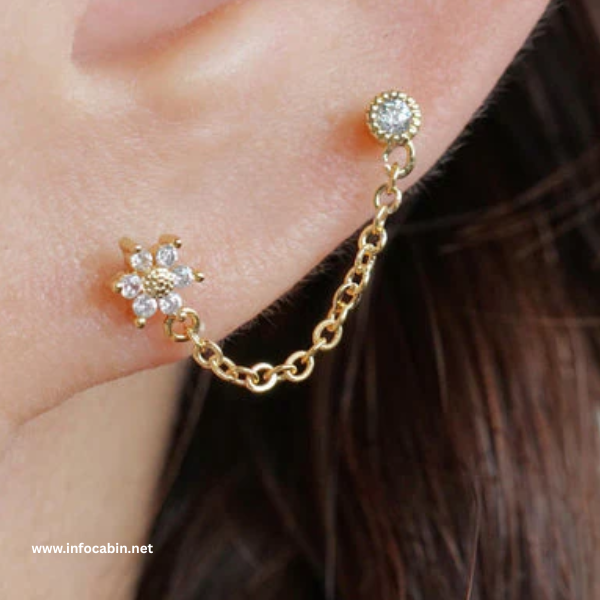
Double Lobe Piercing Earrings
Double lobe piercings open up many creative ways to style your ears. Here are some popular types of earrings you can wear in a double lobe setup:
1. Stud Earrings
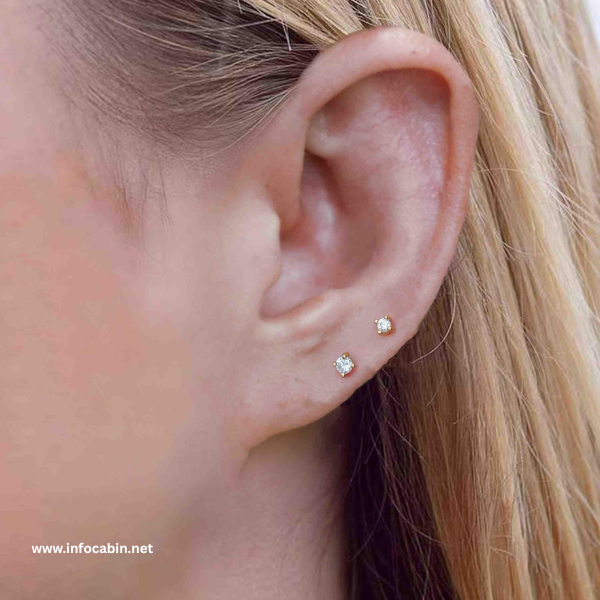
Studs are a timeless favorite for double lobe piercings. They sit flat against the ear, making them comfortable for daily wear and easy to pair with other styles. You can wear two identical studs for a clean, minimalist look or mix different shapes and sizes, like a small diamond with a gold ball, for added personality.
Studs come in various materials, including surgical steel, titanium, gemstones, and pearls, making them suitable for sensitive ears and versatile for casual or formal outfits. They’re also often used as a foundation for ear stacking, especially in the second lobe to complement a bolder first earring.
2. Hoop Earrings
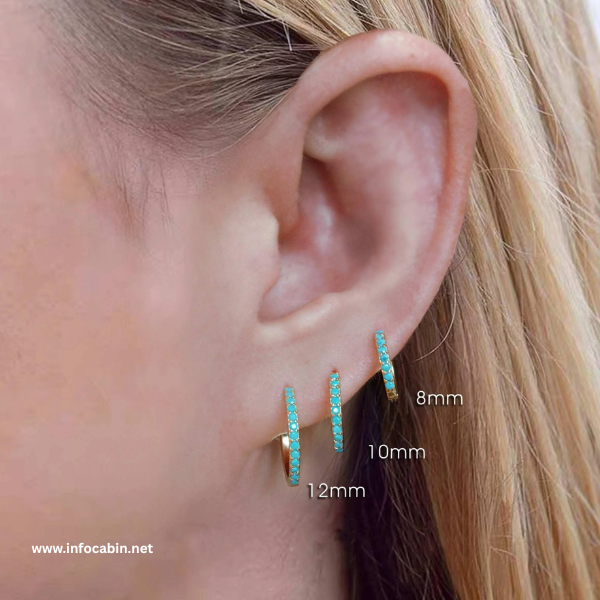
Hoops bring a classic, eye-catching style to double lobe piercings. They come in sizes ranging from tiny loops to large statement pieces, allowing flexible styling. A common combination is a medium hoop in the first hole with a smaller hoop or stud in the second, balancing movement and style.
Hoops can be plain or embellished with charms, gems, or textures. While slightly heavier than studs, small hoops are comfortable enough for everyday wear.
3. Huggie Earrings
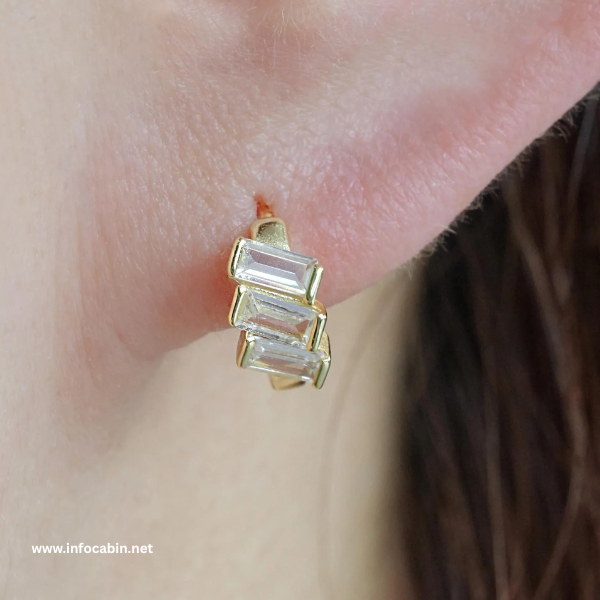
Huggies are small hoops that hug the earlobe closely, making them perfect for a subtle yet stylish look. They’re often worn in the second hole to complement a larger earring above.
Their snug fit makes them ideal for daily wear, including sleeping or wearing headphones. Huggies range from minimalist styles to designs with charms, gems, or textures, and they’re excellent for stacking since they take up little space.
4. Chain Earrings
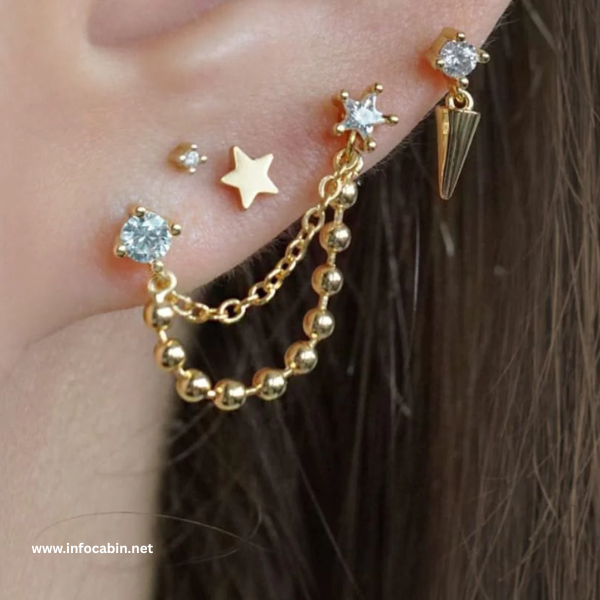
Chain earrings are trendy and bold, connecting two piercings with a delicate chain for a sleek, edgy effect. Some loop through both piercings, while others attach a stud on one end and a backing on the other.
These earrings work best when the holes are close together, and they’re perfect for special occasions or when you want a unique, statement-making style.
5. Drop Earrings
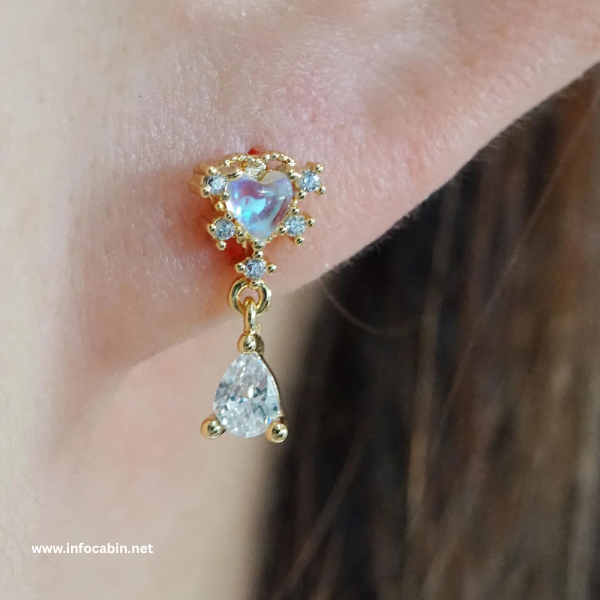
Drop earrings hang below the earlobe, adding elegance and movement. In a double lobe piercing, they’re usually paired with a smaller stud or huggie in the second hole to maintain balance and focus on the drop.
They come in designs from simple geometric bars to sparkling stones and intricate details, making them ideal for dressy events or a glam look.
6. Cuff Earrings
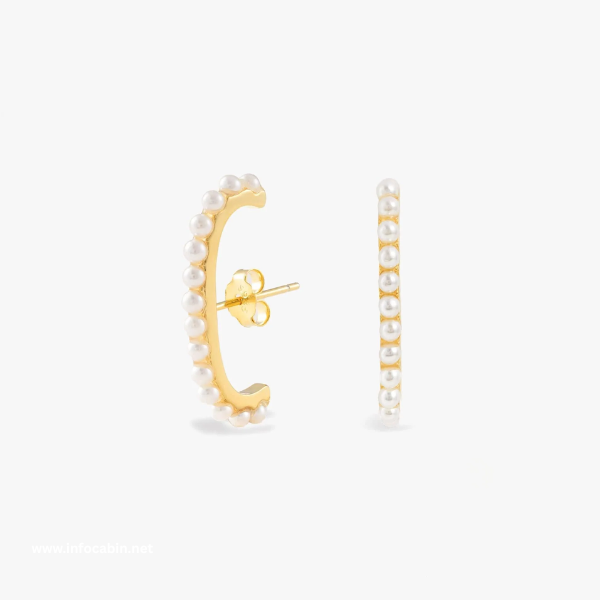
Ear cuffs don’t require a piercing and wrap around the outer ear, adding a layered effect to your double lobe earrings. They come in minimalist bands or ornate styles with stones and chains, making them perfect for completing a curated, fashion-forward look.
Cuffs are easy to put on and remove, allowing experimentation without extra piercings.
7. Flat Back Earrings
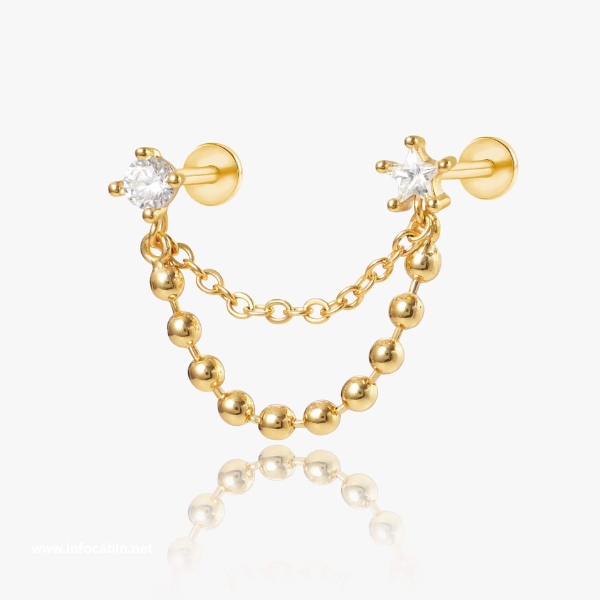
Flat back earrings are especially popular for new piercings but also great for long-term wear. The flat disc at the back sits flush against the skin, reducing irritation and pressure, which is perfect if you sleep on your side or wear headphones often.
They are secured with push-in or threaded fronts, making them less likely to fall out, and provide both comfort and style.
Types of double lobe placements
There’s more than one way to rock two holes. Which vibe do you want?
Stacked double lobe (vertical)
Two holes one above the other. It’s chic and particularly flattering for longer lobes. Think of it as the ear equivalent of a layered necklace.
Side-by-side double lobe (horizontal)
Classic and symmetrical — two holes next to each other create a balanced look and are great for small studs or tiny hoops.
Staggered and spaced double lobe
A little asymmetry goes a long way. Staggering creates visual interest and works well when you want an earring and a small charm to sit together without crowding.
Pain: what to expect with a double lobe piercing
Nervous about pain? Lobe piercings sting, sure, but they’re brief. Many people describe it as a quick pinch followed by a mild throbbing.
First lobe vs second lobe — feels the same?
Yes — lobe tissue is similar, so the feelings are comparable. If you’re getting both at once, expect two brief pinches; if spaced out, the second may feel less nerve-wracking because you know what’s coming.
Tips to reduce discomfort
- Eat and hydrate before your appointment.
- Avoid alcohol and blood-thinners.
- Breathe and relax — tension makes pain worse.
- Ask the piercer to mark placement and confirm you’re comfortable before the needle.
Healing timeline & stages
Healing can vary, but here’s a realistic roadmap.
Initial healing (0–2 weeks)
Swelling and tenderness are normal. Keep the piercing clean and try not to touch it with dirty hands.
Intermediate care (2–8 weeks)
The piercing begins to settle. You might switch to gentler cleaning once crusting lessens, but don’t be tempted to rotate the jewelry unless your piercer says so.
Full maturation (3–6 months+)
Although lobe piercings often feel “healed” in a few weeks, full tissue maturation can take several months. During this period, be cautious with swaps and heavy jewelry.
Factors that speed up or slow healing
Age, general health, smoking, sleeping position, and how well you follow aftercare all influence healing speed. Think of healing like baking: temperature, ingredients, and timing all matter.
Aftercare: a simple, no-fuss routine
You don’t need a complicated ritual. Simple, consistent care is the magic.
Daily cleaning routine
- Wash hands first.
- Clean the area twice a day with saline solution or a sea-salt soak (1/4 tsp non-iodized sea salt in 250ml warm water).
- Gently pat dry with a clean disposable towel or paper towel.
- Avoid alcohol, hydrogen peroxide, and harsh antiseptics — they dry and irritate.
Do’s and don’ts (swimming, makeup, sleeping)
Do keep the site dry and clean. Don’t submerge in pools, hot tubs, or lakes during the initial healing. Avoid heavy makeup near the piercing. Sleep on your back when possible to avoid pressure.
When to contact your piercer or a doctor
If you see increasing redness, pus, fever, or intense pain, contact your piercer immediately. If symptoms worsen quickly, seek medical attention.
Choosing jewelry for Double Lobe Piercing Earrings
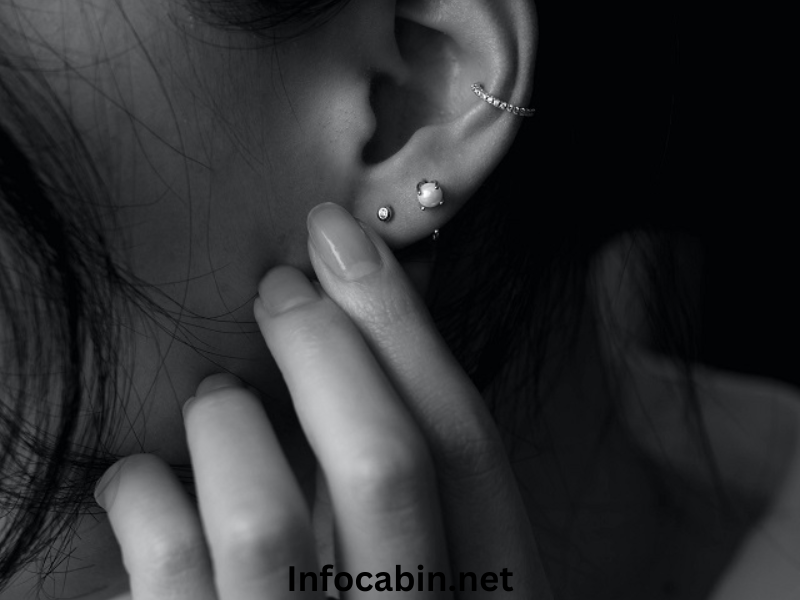
Jewelry choice matters for healing and long-term style.
Starter jewelry: studs, posts, and safe metals
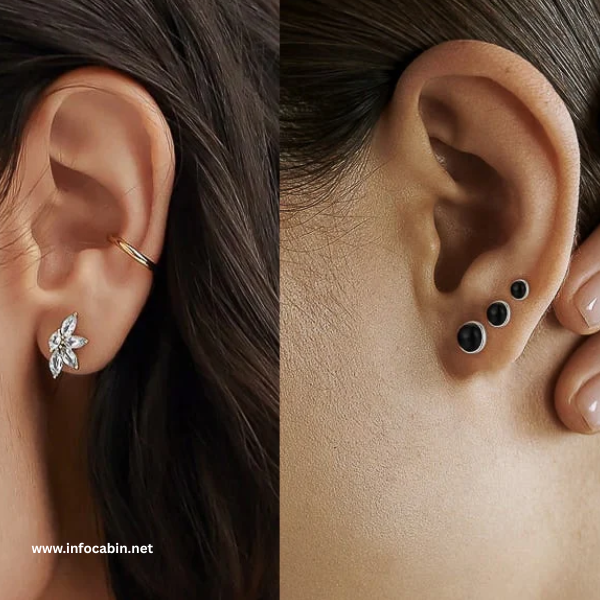
For initial piercings, straight posts with flat backs or threadless studs are common. Use implant-grade titanium, 14k or 18k gold (nickel-free), or surgical stainless steel approved for new piercings.
Progression: hoops, huggies, and decorative studs
Once healed, you can experiment with small hoops, huggies, drops, and decorative studs. Huggies are great for a sleek, continuous look.
Gauge, back types, and length explained
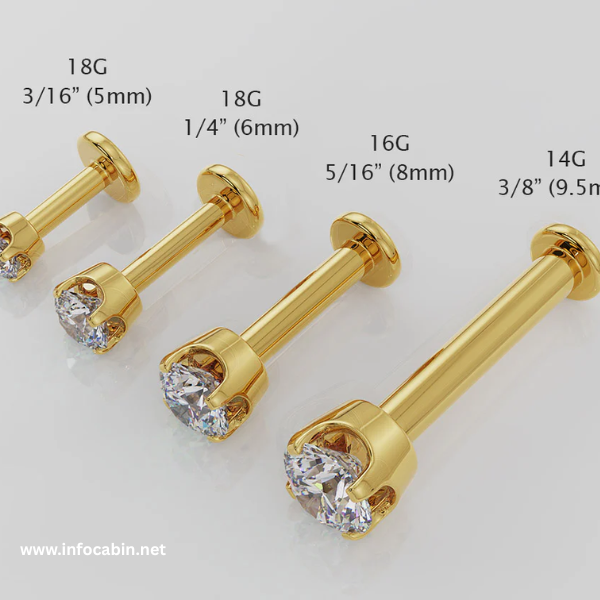
Most lobe piercings are 18–20 gauge. Back types (butterfly, flat, screw-on) affect comfort and security. The post length should fit your lobe thickness — too long invites snagging; too short pinches.
Styling & layering: make your ears sing
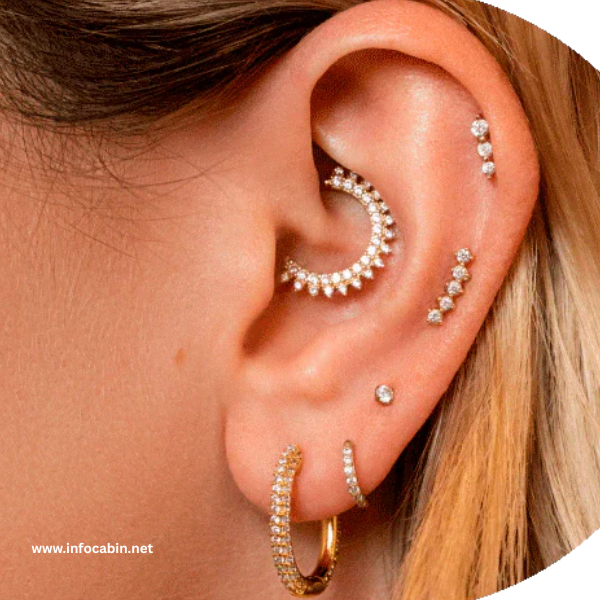
This is the fun part.
Mix-and-match metal rules
Mixing metals is trendy — silver with gold is totally allowed. Just balance the look (e.g., small gold stud + silver hoop) and keep scale consistent.
Occasion-based styling: work, party, wedding
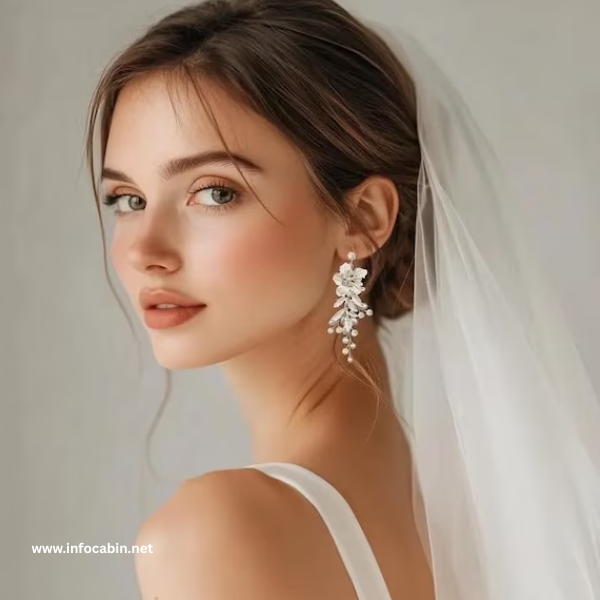
For work: neat, small studs in both holes. For nights out: mix a statement earring with a tiny stud. Weddings? Consider coordinated precious metals or heirloom studs paired with a modern second hole.
Minimal vs statement looks
A minimal approach uses tiny matching studs; a statement approach mixes different shapes and lengths for visual drama. Think tiny punctuation vs. bold exclamation.
Safety, risks, and how to minimize them
No piercing is 100% risk-free, but you can minimize problems a lot.
Signs of infection and allergic reaction
Watch for spreading redness, yellow/green pus, warmth, fever, or unusual swelling. Itchy rash and blistering suggest metal allergy—swap to titanium or gold.
Keloids and hypertrophic scarring — prevention & treatment
Keloids are raised, often larger scars; hypertrophic scars are smaller bumps. If you have a history of keloids, tell your piercer — they may recommend skipping additional lobes or using special techniques and aftercare.
Choosing the right piercer & studio
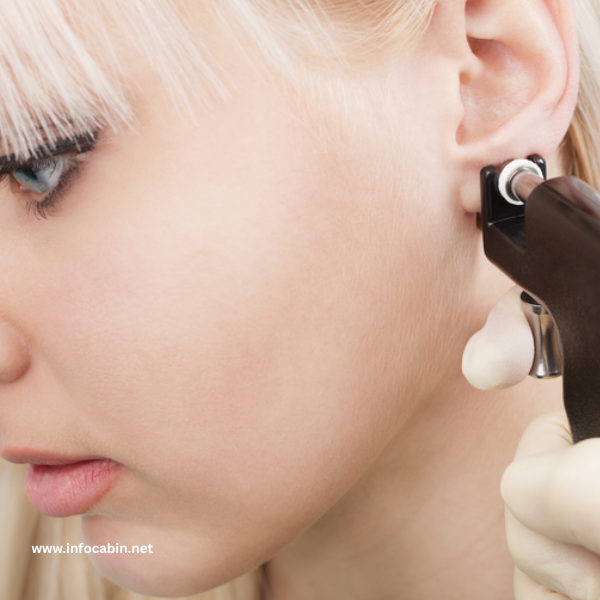
The piercer is the single biggest factor in a good outcome.
Questions to ask at the consultation
- What brand of needles and jewelry do you use?
- Can I see your sterilization procedure?
- Do you pierce with a needle or a gun? (Needles are the safe standard.)
- What experience do you have with double lobe placements?
What good hygiene and technique look like
Look for a sterile workspace, single-use needles, sealed jewelry, and a piercer who uses gloves and marks placement. If anything feels off, walk away.
Cost: what you’ll actually pay
Prices vary by region and studio.
Studio fees vs jewelry upgrades vs tips
Expect to pay for the procedure (piercing fee), the starter jewelry, and possibly extras if you want premium metals. Tip your piercer if they did a great job — it’s appreciated.
Common mistakes people make (and how to avoid them)
Learning from others’ missteps saves time and regret.
Wrong placement, premature jewelry changes, poor aftercare
Avoid changing jewelry too soon — it can trap bacteria and irritate. Don’t allow a piercer to cluster holes too close (crowding leads to migration). Follow the aftercare routine exactly.
Living with double lobe piercings: gym, travel, and sleep
Double lobes are low-maintenance but a few lifestyle tweaks help.
Working out safely
Wear minimal jewelry during contact sports. Use sweatbands to protect fresh piercings from bacteria-laden sweat.
Travel and airport security tips
Earrings usually pass through security; if they set off a scanner, removing them before screening is easiest. For long flights, consider a back cushion or antihistamine if you’re prone to swelling.
Inspiration & trends
From classic pairs to edgy stacks, double lobes can be tailored to your vibe.
Celeb looks and social media trends
Celebrities and influencers often mix studs, tiny diamonds, and micro-hoops. Copying a celeb look? Bring a photo to your piercer to discuss placement.
Conclusion
Double lobe piercings are a small commitment with big expressive payoff. They’re flexible, suitable for many people, and let you build a curated ear that grows with your style. With the right piercer, proper aftercare, and thoughtful jewelry choices, your Double Lobe Piercing Earrings can be a comfortable, confident signature look.
FAQs — 5 quick answers
Q1: How long should I wait between getting two lobe piercings?
You can get two at once (if your piercer recommends it), or space them out. If you’re nervous, getting the second after the first has fully settled (8–12 weeks) is fine. Both options are common.
Q2: Can I wear hoops immediately after a double lobe piercing?
Not usually. Start with the starter studs your piercer provides. After the piercing is fully healed (often 6–8+ weeks for lobe), you can switch to small hoops or huggies — but check with your piercer first.
Q3: Will my double lobe piercing close if I remove the earring?
Yes — especially in the early months. Lobe piercings can begin to close in days to weeks if jewelry is removed. After years, they may stay open longer, but don’t count on it if you want the hole preserved.
Q4: What metals should I avoid for new double lobe piercings?
Avoid nickel-containing cheap alloys and unknown metals. For new piercings, stick to implant-grade titanium, niobium, or 14k+ gold labeled nickel-free.
Q5: How can I prevent my double lobe piercing from migrating or rejecting?
Good placement by an experienced piercer, leaving adequate spacing between holes, avoiding excessive pressure or heavy jewelry, and following aftercare all reduce risk. If you notice the piercing shifting or thinning skin, contact your piercer early.

